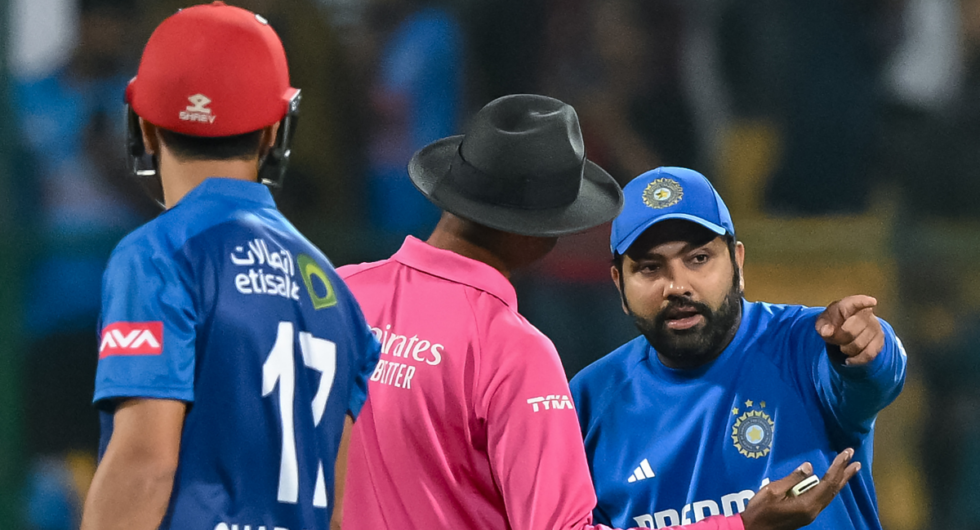Should Rohit Sharma have been allowed to bat in second super over? Here’s what the rules say

 by Ben Gardner
by Ben Gardner
@Ben_Wisden 3 minute read
An action-packed final T20I between Afghanistan and India reached a crescendo as Rohit Sharma retired out in the first super over, only to walk out to bat again in the second. The moment sparked debate aplenty. Here’s what the ICC Playing Conditions say.
What happened
The game had already been a dramatic one. Rohit had played a key role already, with a record-breaking century helping India recover from 22-4 to post 212-4. Rinku Singh also played his part in a remarkable partnership. Afghanistan did well to keep in touch in the chase, tying the game to set up a super over.
There was a hint of controversy as Afghanistan batted first in the extra set, with the away side running overthrows after a deflection off the batter. Virat Kohli and Rohit made their displeasure clear. Then, in the chase, India needed two off the last ball, with Rohit at the non-striker’s end.
While Rohit showed his worth as a ball-striker, he is not the fastest member of the India team, and so chose to retire to allow Rinku to take his place at the non-striker’s end. In the end, the match-tying single was a comfortable one. There was then a discussion between the umpires and Afghanistan’s fielders, with Rohit allowed to bat again. His six and four in the second super over proved crucial as India wrapped up victory.
What do the rules say?
First of all, it’s worth pointing out that super overs are not the reserve of the Laws of Cricket, but are an additional Playing Condition. As such, rules can vary between competitions and formats. In this case, the ICC’s T20I Playing Conditions take precedence. Appendix F deals with Super Overs, and clause 22 states: “Any batter dismissed in any previous Super Over shall be ineligible to bat in any subsequent Super Over.”
Was Rohit dismissed?
There was some suggestion that Rohit had retired hurt, and this is why he was allowed to bat again. This is not the case. A batter can only retire not out “because of illness, injury or any other unavoidable cause”. Given Rohit came out to bat in the second super over, it is clear he was able to bat – he just chose not to because it would be advantageous to his team.
Ravi Bishnoi takes two wickets in three balls in the second super over to end the match and give India a 3-0 series victory.
An incredible game 🤯#INDvAFG pic.twitter.com/OVpwC5idct
— Wisden (@WisdenCricket) January 17, 2024
So Rohit was out. Is there a case, however, that he wasn’t dismissed? The innings of a batter who retires out in a regular game “may be resumed only with the consent of the opposing captain”. From Afghanistan’s apparent frustration at Rohit continuing his innings, it would appear unlikely that any such consent was given, but it does differentiate retired out from the other modes of dismissal. Retired out is also not one of the nine standard modes of dismissal. This feels like a niche interpretation, perhaps against the intended purpose of the rule, which should punish ‘out’ batters.
However, this is an almost unique situation – never before had a T20I seen two super overs played – and would have required umpires to make a fast decision on the fly. And who can resist seeing Rohit bat for a few more balls?

